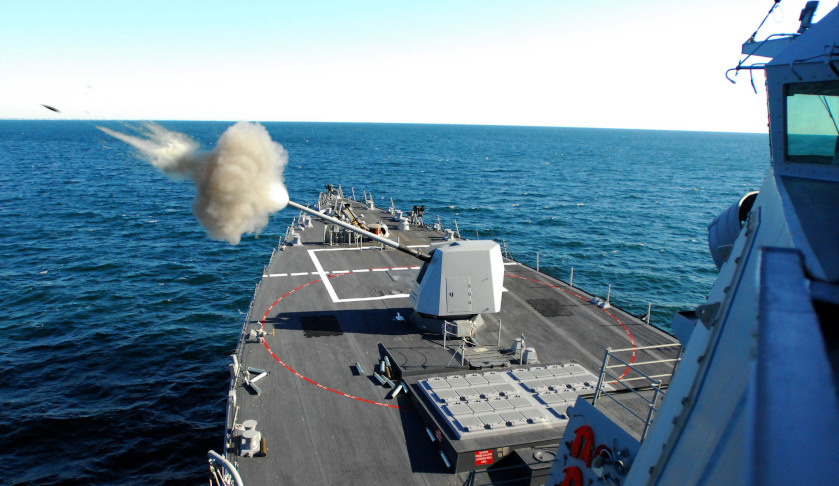The US Navy has successfully fired 20 hyper-velocity projectiles (HVP) from the standard Mk 45 five-inch naval gun as part of a test conducted during the 2018 Rim of the Pacific (RIMPAC) exercises, in the latest round of the arms-race between the US and competitors in Russia and China.
To continue reading the rest of this article, please log in.
Create free account to get unlimited news articles and more!
The HVP is a next-generation, common, low drag, guided projectile capable of executing multiple missions for a number of maritime and land-based gun systems, operated by both the US and key NATO and global allies like Australia, including the Navy Mk 45 series five-inch; Navy, 155 mm artillery systems; and future electromagnetic (EM) railguns.
Designed as a 'domain common' munition, the HVP is capable of performing a number of missions, dictated by the gun system and platform, which range from naval surface fire (NSF) to cruise and ballistic missile defence, anti-surface warfare and other future Naval mission areas.
The EM rail gun, currently under development, uses magnetic force to propel projectiles to hypersonic velocities. This differs from the traditional Mk 45 naval gun, which uses explosive-powder charges.
'Hypersonic' vehicles and projectiles are defined as anything travelling faster than five times the speed of sound, the 12-kilogram (28-pound) HVP reportedly has a range of 80 kilometres at a speed of Mach 7.3.
HVPs leverage a low-drag, aerodynamic design enabling high-velocity, maneuverability and a decreased time-to-target. The HVP travels at about Mach 3 with a range of 65 kilometres, three times the range of traditional naval rounds. These attributes, coupled with accurate guidance electronics, provide low-cost mission effectiveness against current threats and the ability to adapt to air and surface threats of the future.
The compact design of the HVP relieves the need for a rocket motor to extend gun range, firing smaller, more accurate rounds decreases the likelihood for collateral damage and provides for deeper magazines and improved shipboard safety.
Currently, both the US and allies like Australia use a combination of missile systems including the Evolved Sea Sparrow Missile (ESSM), Rolling Airframe Missile (RAM) and the Standard Missile 2 (SM-2) and Standard Missile 3 (SM-3) systems to provide comprehensive air and missile defence capabilities.
The HVP serves to fill the niche capability currently provided by expensive missile systems at a significantly reduced cost. Systems like the ESSM and SM-2 and SM-3 ranging in cost from about US$500,000 and US$2 million, for the ballistic missile defence specialised variants of the SM-3 systems.
In contrast, the HVP system is projected to cost about $100,000 per unit, dramatically reducing the procurement and logistics supply chains needed to support sustained, high-intensity conflict.
The announcement of the successful US test follows recent technology announcements and demonstrations made by both Russia and China. In particular the air-deployable, Russian Kinzhal missile, reportedly capable of velocities as fast as 12,500km/h, the currently in service Kalibr cruise missile and China's recently unveiled EM rail gun have all spurred a new approach as a result of development delays for the US rail gun program.
The Mk 45 Mod 4 provides NSFS range of more than 20 nautical miles (36 kilometres) with the Navy's new five-inch Cargo projectile and an improved propelling charge. Starting with DDG 81, Mk 45 Mod 4 is being forward-fit to US Navy's Arleigh Burke Class destroyers. Other Mod 4 applications include installations for the fleets of Australia (Hobart Class), South Korea (Seejong the Great and Chungmugong Yi Sun-sin Class), Japan (Maya, Atago, Kongo, Asahi and Akizuki Class) and Denmark (Absalon Class).
Stephen Kuper
Steve has an extensive career across government, defence industry and advocacy, having previously worked for cabinet ministers at both Federal and State levels.

 Login
Login








